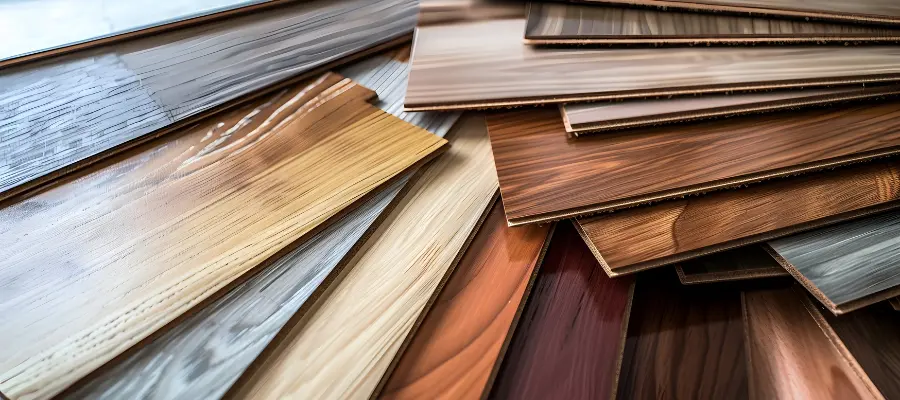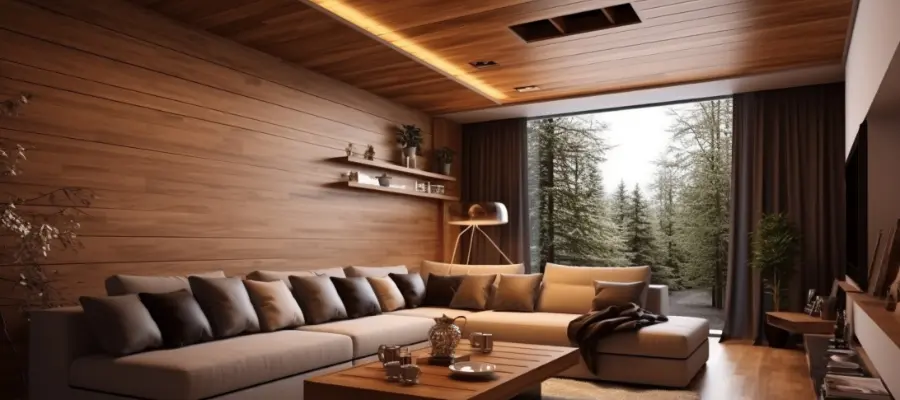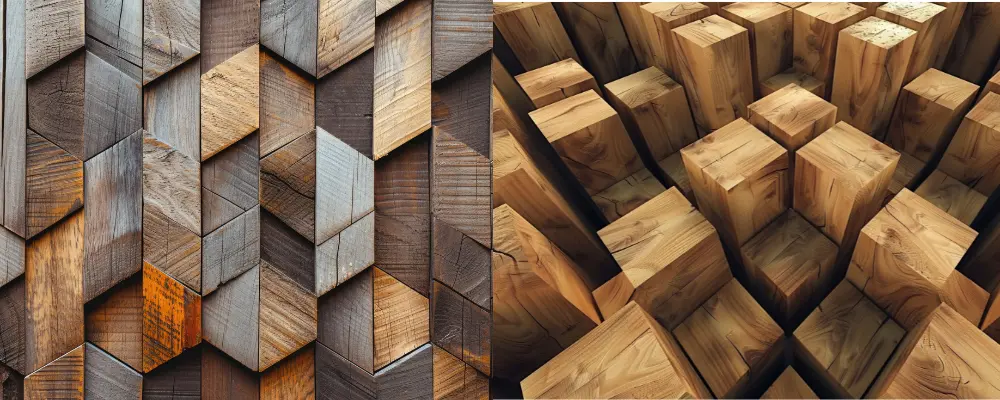Whenever you visit the wood market for your house woodwork, there will be two major types of wood furniture: wood veneers and solid wood. When looking from a distance, both will appear the same. But there will be huge differences.
In today’s blog from Brick & Bolt, you will learn about the major differences and comparisons between wood veneer vs solid wood.
What is Solid Wood?
Solid wood refers to surfaces or furniture made completely from natural wood without veneers or engineered wood products. Oak wood, maple wood, cherry wood, Teak wood and walnut are common varieties of solid wood used in furniture, arches, windows and doors.
What is Wood Veneer?

Wood veneers are created by glueing a thin slice of real wood to a panel of fibreboard , particleboard or plycore. Veneers are made from actual wood rather than a synthetic material that looks like wood. Different types of veneer include Birch veneer, Walnut veneer, Ash veneer, Red Oak veneer, Bamboo veneer etc.
Particleboard is a cost-effective choice, but adding a layer of plywood in the centre is the most durable choice for longevity.
The following are the engineered wood products used in the production of wood veneer.
- Fibreboard
- Particleboard
- Plycore
Fibreboard: Fibreboard, sometimes known as MDF, is created by pressing glued wood fibres together to form flat panels. MDF has a significantly smoother surface than particleboard because it is created with much smaller fibres. Because of its flat surface, it is an ideal medium for paint treatments.
Particleboard: Particleboard is manufactured by compressing wood, sawdust, and adhesive into a flat panel. Particleboard on its own is not a desired finish for furniture, but combined with a veneer slice of solid wood, it looks considerably better.
Plycore: Plycore is made up of multiple thin wood layers (less expensive than surface veneer) bonded together in an alternating grain pattern. The panel is still made entirely of wood, but by alternating the grain direction of each layer, it is far more dimensionally stable than solid wood because it is less vulnerable to atmospheric pressure-induced expansion and contraction. It is also less expensive than solid wood since it employs a less desirable wood in the middle and a lovely, sought-after wood on the surface.
Wood Veneer Vs Solid Wood
| Wood Veneer | Solid wood | |
| Cost | Wood veneer is more affordable than solid wood | Solid wood is significantly more expensive than veneer |
| Splintering and Warping | Less prone to splintering and warping. | Wood rot occurs in old furniture. |
| Density | Not as heavy as natural wood boards. | It will be more heavy. |
| Water Absorption | If wood veneers are not coated with a surface polish, liquids can easily be absorbed. | Less prone to water absorption. |
| Repair | Wood veneers can be difficult or costly to repair. | Solid wood furniture can be sanded and refinished multiple times, extending its lifespan. |
| Durability | More susceptible to scratches, dents, and moisture damage. The thin veneer layer can peel or chip over time, especially if not properly maintained. | Extremely durable, able to withstand significant wear and tear. |
| Appearance | Offers various types of wood patterns at a lower cost. | Offers unique grain patterns and natural variations. |
| Environmental Impact | It offers a more eco-friendly home design as it uses less wood. | Higher environmental impact due to greater wood consumption. |
Advantages and Disadvantages of Veneer Wood
Advantages of Wood Veneer
- Wood veneers employ less natural wood, resulting in lower costs.
- The wood veneer consumes less wood, making it a more sustainable option.
- Wood veneers are also less prone to movement, which can result in splitting, warping, and fit issues in an all-wood construction.
Disadvantages of Wood Veneer
- Wood veneer furniture is more susceptible to chipping, peeling, and damage from moisture.
- Wood veneer furniture’s repair cost is higher and cannot be repaired multiple times like solid wood.
- It won’t offer the same depth and characteristics as solid wood.
You can consider tips on incorporating wood into your interior design elements, be sure to read our design guide.
Advantages and Disadvantages of Solid Wood

Advantages of Solid Wood
- The solid wood is completely natural wood. It won’t contain MDF or other materials.
- Solid woods are more durable than veneers. Solid wood furniture can last for generations based on the type and quality of finish.
- Solid wood offers a variety of grain patterns, which will give a unique look.
If you’re interested in learning more about woodwork for home projects, check out our comprehensive wood work guide.
Disadvantages of Solid Wood
- Solid wood demands regular maintenance. Otherwise, atmospheric pressure can drive natural wood to expand, resulting in cracks or splits in the furniture design.
- Some purchasers may be unable to afford this higher cost of wood.
- It requires higher consumption of natural trees, causing deforestation.
Conclusion
Ultimately, the decision between wood veneer and solid wood comes down to your goals, which may include money, beauty, durability, or environmental impact. Wood veneer is a low-cost, customizable option that uses cutting-edge technology to create attractive designs and ensures sustainable sourcing. On the other hand, solid wood presents outstanding durability, beauty, and the opportunity for long-term investment. Thus making it a great choice for people who value workmanship and longevity. Understanding the strengths and limits of each material allows you to make the best choice for your specific needs and tastes. Whether you like the practicality of wood veneer or the timeless appeal of solid wood, both offer the ability to improve the beauty and utility of design. Use this comparison of wood veneer vs solid wood to design your dream house environments that are not only visually beautiful but also sustainable and long-lasting.

